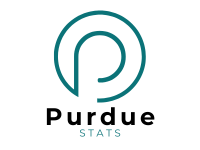
Implementing Protocolo Operacional Padrao: Best Practices for Success
In today’s fast-paced business environment, consistency and efficiency are paramount. Companies strive to streamline their operations while maintaining high standards of quality. One effective way to achieve this is by implementing Protocolo Operacional Padrao (POP). This systematic approach offers a clear framework that helps organizations standardize processes, enhance productivity, and improve overall performance.
But what exactly does POP entail? And why should businesses prioritize its implementation? Whether you’re new to the concept or looking for ways to optimize your existing protocols, understanding the essence of POP can be transformative. Let’s explore how embracing these standardized operational procedures can lead your organization toward greater success.
Understanding Protocolo Operacional Padrao (POP)
Protocolo Operacional Padrao, or POP, refers to a standard operating procedure that defines the steps necessary for various tasks within an organization. It provides a clear guideline for employees to follow, ensuring consistency in performance and quality.
At its core, POP serves as a roadmap. By outlining specific processes, it minimizes ambiguity and empowers teams to operate efficiently. This structured approach helps in reducing errors and streamlining workflows.
Moreover, implementing POP fosters accountability among staff members. When everyone knows their roles and responsibilities clearly outlined by these protocols, collaboration becomes smoother.
In diverse industries—ranging from manufacturing to healthcare—POP plays a crucial role in maintaining compliance with regulations while enhancing operational effectiveness. Understanding this framework allows organizations to harness its full potential for improved outcomes and heightened productivity.
Importance of Implementing POP
Implementing Protocolo Operacional Padrao (POP) is crucial for any organization striving for efficiency. This structured approach streamlines processes, making daily operations smoother and more predictable.
When teams follow a POP, they reduce the chances of errors. Clear guidelines help everyone understand their roles and responsibilities better. As a result, productivity tends to increase.
Moreover, having a defined protocol fosters accountability within teams. Employees know what is expected of them and can measure their performance against set standards.
Compliance with regulations also becomes easier with POP in place. Organizations that adhere to established protocols are less likely to face legal issues or penalties.
Implementing POP not only enhances workflow but also builds trust among stakeholders by showcasing commitment to quality and consistency.
Identifying Key Areas for Implementation
Identifying key areas for implementing Protocolo Operacional Padrao (POP) is crucial for achieving desired outcomes. Start by assessing the current processes within your organization. Look for workflows that lack standardization or clarity.
Engage with team members to gather insights on pain points. Their firsthand experience can highlight inefficiencies and opportunities for improvement.
Consider focusing on high-impact areas first, such as customer service or production lines. These sections often benefit significantly from streamlined procedures.
Don’t overlook compliance-related tasks either; ensuring adherence to regulations can protect your business in the long run.
Prioritize training needs associated with each area identified. Adequate preparation will facilitate smoother transitions and enhance buy-in from staff members.
Best Practices for Successful Implementation
To implement Protocolo Operacional Padrao (POP) effectively, start by fostering a culture of collaboration. Involve team members at every step, from planning to execution. Their insights can illuminate potential pitfalls and create buy-in.
Establish clear objectives and metrics for success early on. This clarity keeps everyone aligned and focused on shared goals.
Regular training sessions are essential. Equip your staff with the knowledge they need to understand and adhere to POP guidelines fully.
Documentation should be comprehensive but accessible. Use simple language to ensure that all employees grasp the processes without confusion.
Encourage feedback throughout the implementation process. Establish an open channel where team members feel comfortable sharing their thoughts or concerns about the new practices.
Embrace flexibility in your approach. Adaptation is key when navigating unexpected challenges or changes in operational needs.
Tips for Overcoming Challenges
Challenges often arise during the implementation of Protocolo Operacional Padrao. A proactive approach can make a significant difference.
First, engage your team early on. Foster an open environment where concerns and suggestions are welcomed. This helps in addressing potential issues before they escalate.
Next, invest time in training. Ensure that all staff understand the protocols thoroughly. Knowledge gaps can lead to confusion and frustration.
It’s also essential to be flexible. Adaptability allows you to refine processes as needed based on feedback and results.
Monitor progress diligently. Regular check-ins help identify pain points quickly and allow for timely interventions.
Celebrate small victories along the way. Recognizing achievements boosts morale and keeps everyone motivated throughout the journey of implementing POP effectively.
Measuring Success and Making Adjustments
Measuring success in implementing Protocolo Operacional Padrao (POP) is crucial for long-term effectiveness. Start by establishing clear metrics that align with your goals. These could include efficiency rates, error reduction, and employee satisfaction.
Regularly collect data to track progress against these benchmarks. Use surveys, performance reports, and feedback sessions to gather insights from team members directly involved with the POP.
Adjustments may be necessary as you analyze this data. If certain procedures aren’t yielding expected results, revisit them promptly. Engage your team in discussions about what’s working and what isn’t; their perspectives can provide valuable information.
Flexibility allows organizations to refine processes continuously. Iterative improvements keep the Protocolo Operacional Padrao relevant and effective over time, ensuring it meets evolving needs while maintaining operational excellence.
Case Studies: Successful Implementation of POP
Several companies have effectively implemented Protocolo Operacional Padrao, showcasing its transformative potential.
One notable example is a manufacturing firm that streamlined its production processes through POP. By documenting standard operating procedures, the company reduced errors by 30%. Employees reported feeling more confident and empowered in their roles.
In another case, a healthcare organization adopted POP to enhance patient care consistency. This resulted in quicker response times and improved patient satisfaction scores. Staff training focused on these protocols led to better teamwork and communication.
A tech startup leveraged POP for onboarding new employees. The structured approach minimized confusion, while clear guidelines helped newcomers adapt swiftly. Productivity increased as teams spent less time navigating uncharted territory.
These case studies illustrate how tailored implementations of Protocolo Operacional Padrao can lead to significant operational improvements across various sectors.
Conclusion
Implementing Protocolo Operacional Padrao is more than just a regulatory requirement; it’s a pathway to operational excellence. By understanding its significance and strategically applying best practices, organizations can streamline processes and enhance efficiency.
Through careful identification of key areas for implementation, businesses can maximize the benefits of POP. It’s vital to remain adaptable in the face of challenges that may arise during this journey. With proactive strategies and continuous measurement, companies position themselves for sustained success.
As demonstrated in various case studies, successful implementation not only fosters compliance but also cultivates a culture of quality within an organization. Emphasizing clear communication and employee involvement further amplifies these results.
Embracing Protocolo Operacional Padrao serves as an investment toward future growth—one that empowers teams while elevating overall performance standards across industries.








